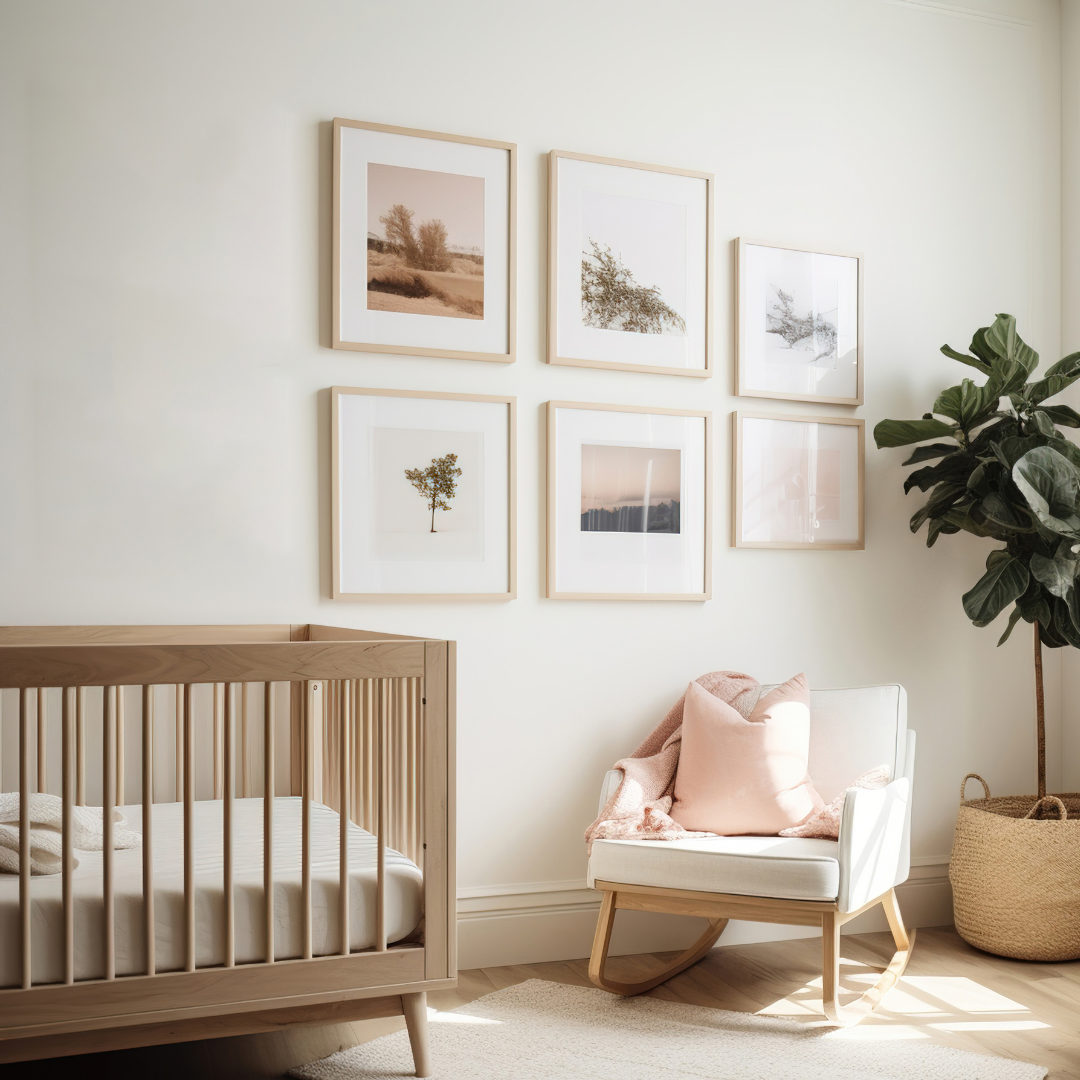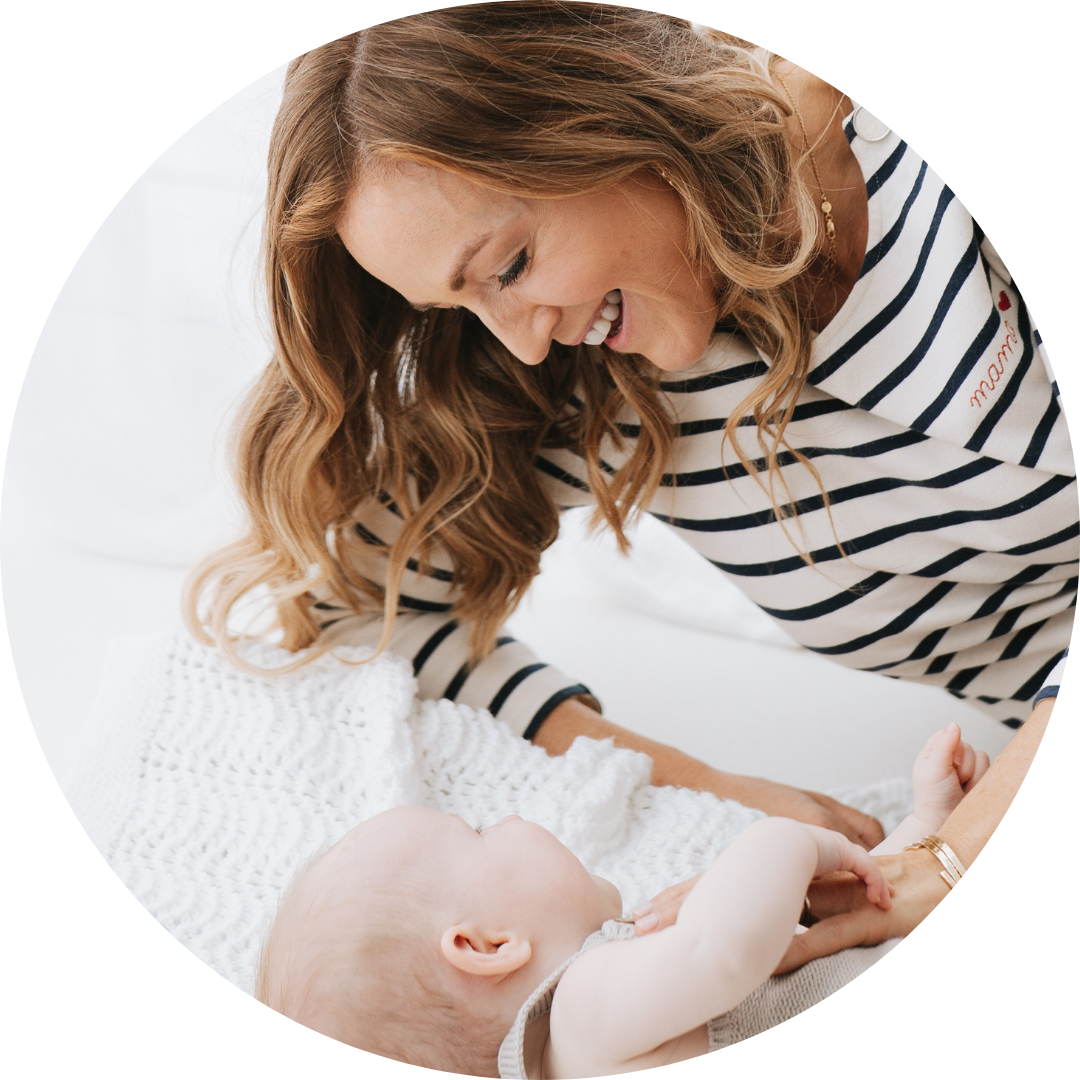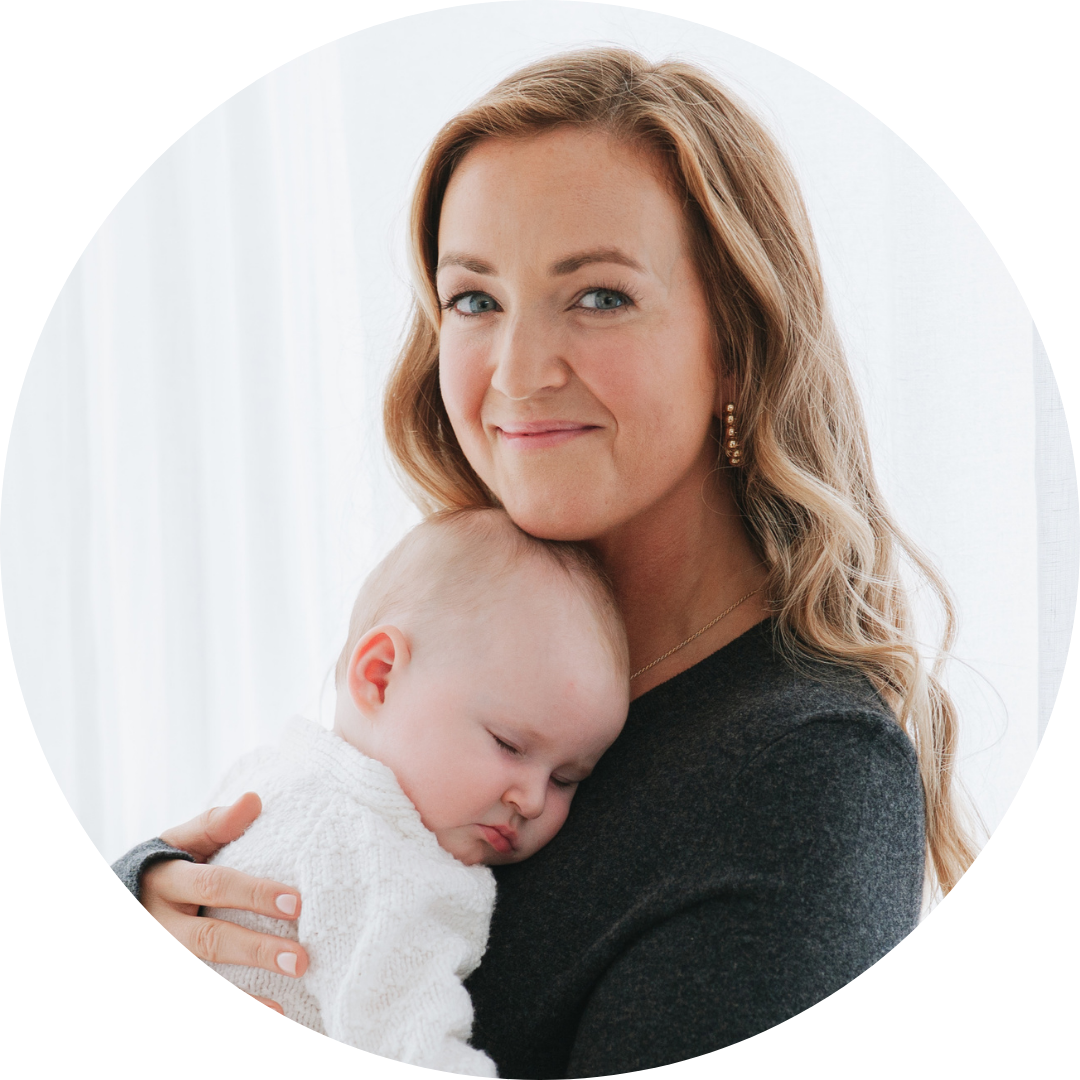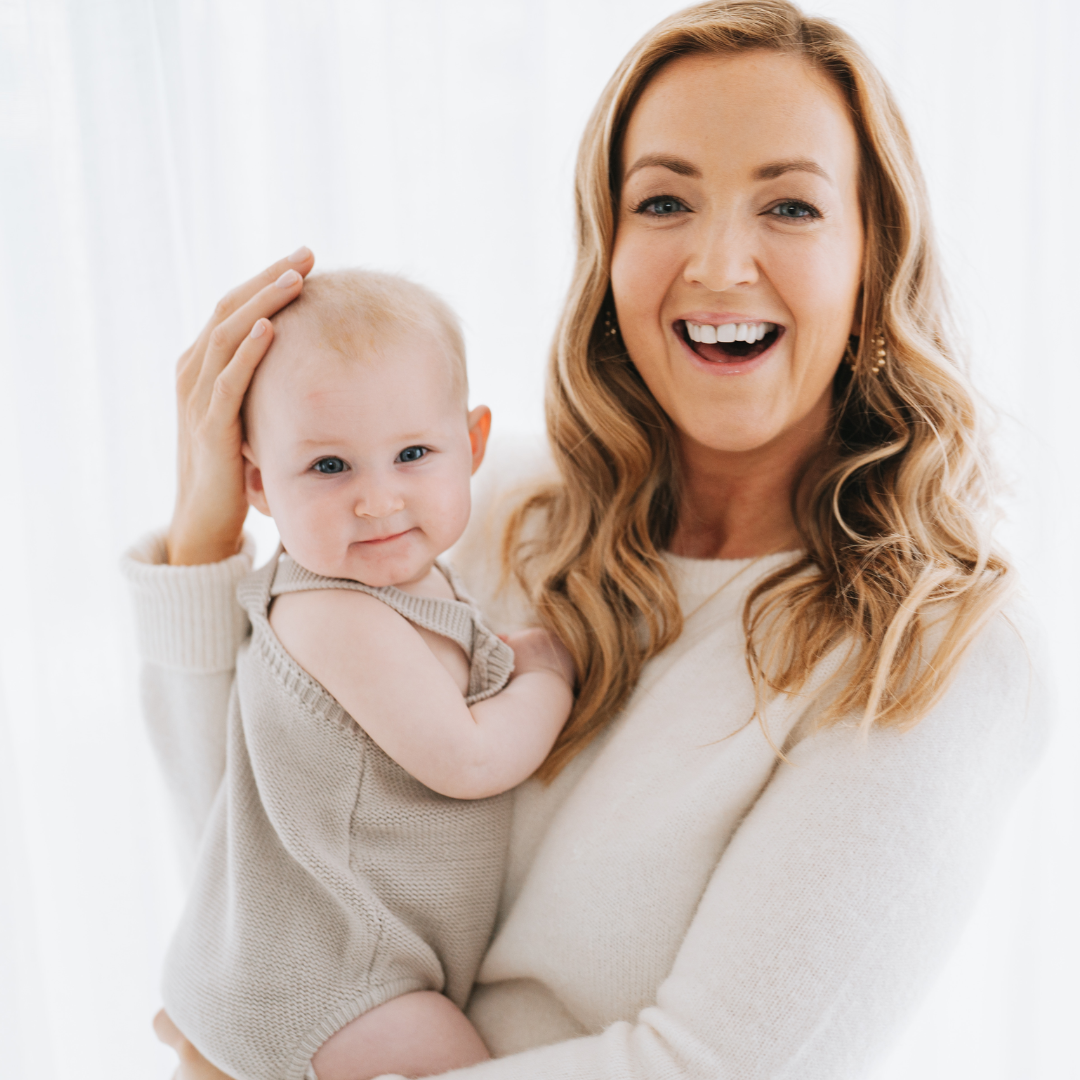Transitioning your baby from sleeping in your room to a cot in their own room is a big (sometimes emotional!) milestone. Whilst this transition can feel huge, often babies don't blink an eyelid and it feels far bigger to us as parents than it does for them!
In this blog post, we will discuss some steps and strategies to transition your baby to their own room, so that it is as smooth and stress-free as possible.
Timing the transition
Choosing the right time to transition your baby to their own room is important. The Lullaby Trust's guidelines recommend waiting until your baby is six months old before making the move, as this age ensures they have developed a more regular sleep pattern and are less dependent on night time feeds. However, every baby (and parent) is different, so observe your little one's readiness and how you are feeling emotionally about having the physical space between you and your baby and only move them if it feels in alignment with where you are at.
At around 3-4 months, babies start producing melatonin (the "sleepy" hormone), which helps put their sleep cycles into a more regular rhythm. This biological development makes the 6-month mark a sensible time to consider the room transition, as they're more likely to have established more predictable sleep patterns by then.
Before moving your baby into their own room, it's essential to ensure the sleep environment is set up correctly:
Darkness
The darker the room, the better for sleep. Invest in quality blackout blinds or curtains that can make the room pitch black day or night. This is particularly important for early risers and will help with naps during daylight hours too.
Temperature control
Maintain a room temperature between 16-20°C (61-68°F). This is not only recommended for safe sleep but also helps promote better quality sleep as humans sleep better in slightly cooler environments.
White noise
Many babies sleep better with white noise as they're used to the constant sounds they heard in the womb. Consider adding a white noise machine to your baby's room to help mask household sounds and create a consistent sleep environment.
Clear cot/crib
Keep the sleeping space clear with a firm mattress and fitted sheet. Avoid loose bedding, cot bumpers, toys, or other items that could pose safety risks. Familiarize your baby with their new room
Introduce your baby to their cot and bedroom gradually to help them feel comfortable and secure in their new sleep space. Here's how to make this transition smoother:
Start with daytime activities
Begin by spending time in the new room during wakeful, happy moments. Have some playtime on the floor, do nappy changes, or read stories in there so they associate the space with positive experiences.
Transition naps first
The first nap of the day is typically the easiest for babies, making it the perfect opportunity to start the transition. Try putting your baby down for their morning nap in their new cot. If they're resistant, don't force it - try again the next day.
Bring familiar items
Use the same sleeping bag, comforter (if age-appropriate), or sheets that your baby is already accustomed to. The familiar scent and feel will provide comfort and continuity during the transition.
Establish a consistent bedtime routine
Consistency is key in preparing your baby for the transition. A solid bedtime routine signals to your baby that it's time for sleep and helps their body and mind prepare for rest.
Elements of an effective bedtime routine:
1. A warm bath to relax muscles and lower body temperature
2. Changing into sleep clothes and a fresh nappy
3. A quiet feeding session (not in a dark room!)
4. Reading a short bedtime story
5. Singing a consistent lullaby as you put them into their cot
The key is to follow the same sequence of events each night, which helps create predictability and security for your little one. This routine should ideally take 20-30 minutes from start to finish.
For more detailed bedtime routine guidance, read our blog, ‘The final hour before bed’ here.
Teaching self-settling skills
One of the most crucial aspects of a successful room transition is ensuring your baby can self-settle. When babies can fall asleep independently at bedtime, they're more likely to be able to resettle themselves when they wake between sleep cycles during the night.
At The Sleep Chief, we teach two main settling methods:
Controlled comforting method
This gentle approach involves staying in the room with your baby while they learn to fall asleep independently. It provides reassurance through your presence while giving them space to develop self-settling skills.
Controlled crying method
This method involves brief, timed check-ins that provide reassurance while giving your baby the opportunity to practice falling asleep on their own. This can be particularly effective for babies who find parental presence too stimulating.
The goal with both methods is to give your baby the opportunity to self-settle while providing appropriate reassurance. These approaches help build confidence in their ability to fall asleep without being rocked, fed, or held.
Need a blueprint to follow?
Our Sleep Guides give you a step-by-step plan to follow to help your little one to become a great sleeper.
Managing the first few nights
The first few nights in a new sleep environment can be challenging for both babies and parents. Here's how to handle this transition period:
Be responsive to night time needs
During the initial nights, your baby may wake more frequently as they adjust to their new surroundings. Respond promptly to genuine needs while still encouraging independent sleep skills.
Use a baby monitor
A good quality baby monitor will give you peace of mind while allowing your baby the space to adapt to their new environment. Choose one with video functionality so you can check on your baby without entering the room and potentially disturbing them.
Have a clear plan for night wakes
Decide in advance how you'll handle night time wakes. For example, if your baby typically goes 3-4 hours between feeds during the day, they should be capable of similar stretches at night. For wakes that occur earlier than expected, try using your settling method first before assuming hunger.
Be consistent with your approach
Whatever settling method you choose, be consistent in applying it. Babies learn through repetition, and consistency helps them understand what's expected. Troubleshooting common challenges.
Early morning wakes
If your baby starts waking earlier than usual after the transition, check that the room is sufficiently dark and consider whether they might be getting too cold in the early hours (when body temperature naturally drops).
Separation anxiety
Around 8-10 months, many babies experience separation anxiety, which can make room transitions more challenging. If this coincides with your transition plans, you might want to wait a few weeks or be prepared to provide extra reassurance.
Illness or teething
If your baby becomes ill or starts teething during the transition period, it's okay to pause and provide extra comfort. Once they're feeling better, you can resume the process where you left off.
Being patient with the process
Transitioning your baby to their own room may not happen overnight. When we tried with Jago around 6 months (who had been sleeping through the night in our room beforehand), the first night ended up being disturbed, so we moved him back in with us, and then tried again a couple of weeks later, which worked much better.
Be patient and persistent, and with time, your baby will adjust to and love their new bedroom. Remember that progress might not be linear - there may be setbacks along the way, but these don't mean failure. Each attempt helps your baby become more familiar with their new sleep space.
Addressing parental anxiety
It's completely normal to feel anxious about having your baby sleep in another room.
2. Use a reliable monitor with good range
3. Remind yourself that your baby is in a safe sleep environment
4. Practice deep breathing or other relaxation techniques when feeling anxious
5. Remember that this transition is beneficial for both your baby's independence and your own sleep qualityIn our experience, the first night is more anxiety-inducing for parents (constantly checking the baby monitor!) than it is for babies, who often are totally content with the transition to their own room.
You’ve got this!
The transition to sleeping in their own room is an important milestone in your baby's development. By choosing the right timing, familiarizing your baby with their room, establishing a solid bedtime routine, creating a safe sleep environment, maintaining consistency, providing comfort and reassurance, and being patient, you can navigate this transition successfully.
Trust your instincts as a parent and adjust your approach as needed based on your baby's responses.
With patience, consistency, and the right approach, your baby will soon be sleeping soundly in their own room, giving everyone in the family better quality sleep.









